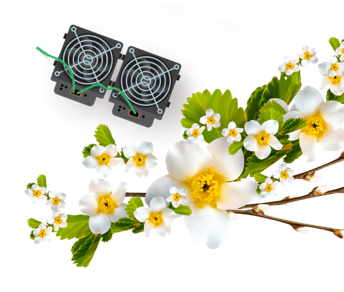It’s a very good idea to spend time researching whether your investment in mining Qtum would bring you a profit. With Qtum, the price varies based on the market, and the number of miners plays a major part in terms of the profit you can make.
In order to form an opinion, you will need to consider the average price, and how much you have to spend on a mining rig. ASICs are the optimal mining hardware and investing in them would cost you a considerable amount. A GPU may not bring a big income when mining on a computer, but since you are just starting with Qtum, it can be considered as well.
There are graphs showing the mining profitability in USD which can be earned at 1 Mh/s of hash rate with Qtum. Electricity costs are displayed as well. In the Qtum ecosystem, the more miners, the more mining rises in difficulty, which leads to larger demand for hash rate.
Hash rate can be understood as computer power needed to create new blocks. The time needed is called “block time”. All of these factors will play a role in determining the economics of mining Qtum.
A Simple Guide to Mining Qtum
Before mining Qtum, we must first “mine” deeper into some terms:
-
ASIC miner: ASIC miner, or Application Specific Integrated Circuit, is specialized equipment, made of a motherboard, ASIC chip, and a cooling system. These devices play an important role in mining a given cryptocurrency. ASIC mining rigs aim to solve as many cryptographic puzzles at a time as possible and they’re doing a good job. An ASIC machine is a worthy investment but you are still facing a major problem with the big consumption of noise, heat, and power, and as the system functions 24/24, it gradually deteriorates.
-
Hashrate: Hashrate (hash power) can be understood as hash power or computing power of a computer. In Bitcoin's network, Hashrate demonstrates the amount of conjectures your mining setup will generate for the 'puzzle' in a particular time. This rate can be improved in orders of magnitude (KH / s, MH / s...) in hashes per second.
-
Ethash: Ethash is an algorithm used for proof-of-work in Ethereum-based cryptocurrencies. Ethash is designed to be memory-hard ASIC-resistant (standard ASICs can't decode puzzles by having a huge memory). But just like Bitcoin, the decentralization didn’t last too long due to the first ASIC miners’ launch on the market in early 2018.
-
SHA256: Initially developed by the NSA back in 2002, the SHA256 is a secure hash algorithm used to create unique and irreversible hash functions. The most common SHA256 use is within the bitcoin currency system. SHA256 is a 256-bit hash which is what miners use their mining setups to decrypt, which ultimately validates objects, for which miners are rewarded.
From the get-go, the Scrypt algorithm was expected to be ASIC-resistant similar to Ethash. However, when ASIC miners for Scrypt was launched, things have changed for cryptocurrencies like Litecoin, Bitcoin or Ethereum.
Cryptocurrencies like bitcoin are already being mined by ASICs so it's pointless to mine these with a GPU nowadays.
Imagine if you find that one of the best GPUs on the market is worth about $400 but only gives you around 1 GH / s of power, and Antminer U2 that you can buy on eBay for about $20 will give you a 2 GH / s. This is a big difference, and it is crucial to approximate whether your target cryptocurrency is worth investing in a specific setup.
The problem with Ethereum mining is DAG Epoch. Over time, the mining complexity is growing as the currency rises and the amount of miners expands. The memory requirements also rise, which makes mining far more expensive. Mining with smaller GPUs has become a daunting task because of this feature that prevents mining by ASICs.
Several mining programs enable simultaneous mining of two cryptocurrencies such as Ethereum and Pascal, Decred, etc. It helps quality to be retained as both coins are mined. As we have seen, when it comes to Eth+sia mining, mining both has hardly any effect on the Ethereum hash rate. But it’s simple to get two coins at once with the same power you have already.
Qtum and Proof of Stake (PoS)
Qtum uses the Proof of Stake (PoS) consensus mechanism. Therefore, you cannot mine Qtum with devices like GPU/CPU or ASIC like Bitcoin. The only way of mining QTUM is through staking. The PoS system operates on the principle of randomly selected block validators.
By having the largest stake in each validation, the validators will improve their chances of creating a return. The higher the deposit of money in the block (or stake), the greater the probability of validating the block and then collecting the transaction fees later on.
The strong point of this particular architecture is that it is thought to be more environmentally friendly, because it does not require huge quantities of energy and hardware. While you can't mine Qtum directly, you can mine another token, and just swap them for Qtum!


